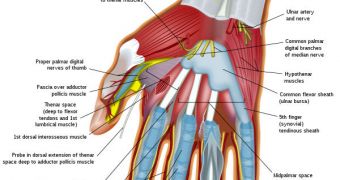A new scientific study managed to reveal how people identify their own copying errors. The brain may in fact employ “two editors” to ensure the maximum quality of information.
Sloppy copying may have disastrous consequences even today, but it could have been even more dangerous in our species' past. As such, it's perfectly understandable why the brain developed such advanced “proof-reading” mechanisms.
In order to carry out the new investigations, researchers doctored a computer program, which introduced errors in the words test participants types, and stealthily corrected some of their real errors.
The ultimate goal was to tease out the mechanisms underlying performance monitoring, the team explains. Details of the work appear in the October 29 issue of the esteemed journal Science.
For the research, scientists at the Vanderbilt University in Nashville selected only skilled computer typists, who were capable of using all of their ten fingers to write at least 40 words per minute.
VU psychologists Gordon Logan and Matthew Crump explain that all of the subjects were capable of writing a paragraph of text with an accuracy level of more than 90 percent, Science News reports.
As the participants were typing away at their paragraphs, a specially-designed computer program was used to correct about 45 percent of their real errors, while at the same time introducing common types of mistakes in the texts.
These included, for example, changing the order of two letters in a word, or putting an extra letter on. At times, the program subtracted a letter from common words such as sweat, thus changing the work into swet or swaet.
When the typing session was complete, the typists generally tended to take responsibility for the errors introduced in their texts artificially, but also credit for the computer's corrections.
This means that, even if the persons wrote the wrong word on the keyboard, they rated their performance as accurate if the word that ultimately appeared on the screen was the same as they one they intended to write.
An interesting aspect worthy of note is the behavior the typists' fingers had when making a mistake. Even if the software fixed the errors immediately, the fingers slowed down nearly imperceptibly, showing that the brain was at least unconsciously aware that an error had been committed.
“The body is doing one thing and the mind is doing another. What we found was that the fingers knew the truth,” Logan explains.
He adds that the brain may in fact have two methods of correcting errors, a lower one that carries out the actual tasks, and a higher one that is responsible for assigning credit and blame.

 14 DAY TRIAL //
14 DAY TRIAL //